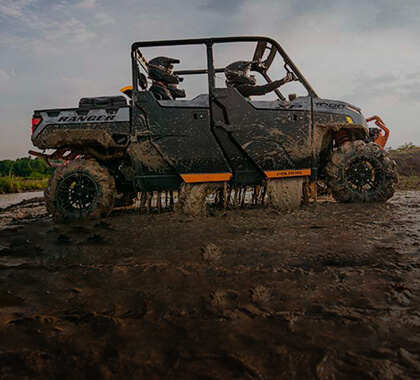If you're planning on buying a Polaris Ranger winch, there are a few things you'll want to keep in mind. First and foremost, you'll want to pay attention to the winch's load capacity. A good rule of thumb is to look for a winch that can pull at least 1.5 times the weight of your Ranger. For example, the Ranger XP 1000 has a dry weight of approximately 1,620 pounds, so you shouldn't go for anything less than a 2,500-pound winch for that model. The Ranger 570, with a dry weight of around 1,095 pounds, would also require a 2,500-pound winch.
It's important to factor in the weight of any passengers, gear, and fluids when calculating your appropriate weight. Winches typically come in 3000 lb, 3500 lb, 4000 lb, and 4500 lb capacities, with some exceeding 5000 lb.
Once you've found a winch with an appropriate load capacity, you'll want to make sure it comes as a complete kit that includes all necessary components, such as cables, control switches, and mounting hardware for your Polaris Ranger. While some people like to mix and match various components, it's generally better to go with a complete kit unless you're 100% sure of what you're doing.
Another important factor to consider is the line speed and material. You don't want a winch that's too fast, as that can hamper your control, but you also don't want one that's too slow. The most common material used for winch lines is steel cable, but synthetic ropes are becoming increasingly popular due to their lighter weight, easier handling, and better safety characteristics.
When it comes to choosing a type of winch, there are a few options available. Plug and play winches are designed to be easily installed without any additional wiring or modification to the vehicle. They're typically mounted on the front bumper or in the rear cargo bed of your Polaris Ranger and can be easily connected to the vehicle's electrical system.
Bumper winches, on the other hand, are mounted on the front bumper and are designed for heavy-duty use. They're larger than plug and play winches and can handle heavier loads. While they do require some wiring and installation work, they offer more versatility than plug and play winches.
Bed winches are mounted in the rear cargo bed of your Polaris Ranger and are primarily designed for pulling loads onto the bed. They're smaller and less powerful than bumper winches, but they're more convenient for hauling and pulling loads onto the bed.
Finally, you'll need to decide between electric and hydraulic winches. Electric winches are generally more affordable and versatile, as they can be used with any Polaris Ranger that has a 12V power supply. Hydraulic winches are typically more powerful and can handle heavier loads, but they require a hydraulic system, which can be costly to retrofit onto a vehicle that doesn't already have one.
In conclusion, buying a Polaris Ranger winch requires careful consideration of load capacity, kit completeness, line speed and material, winch type, and electric vs hydraulic options. By taking your time and carefully weighing your options, you can find the perfect winch for your needs and ensure your Polaris Ranger is ready for whatever challenges come your way.





